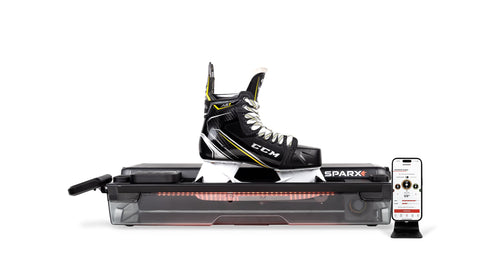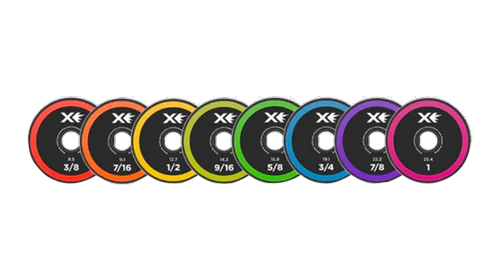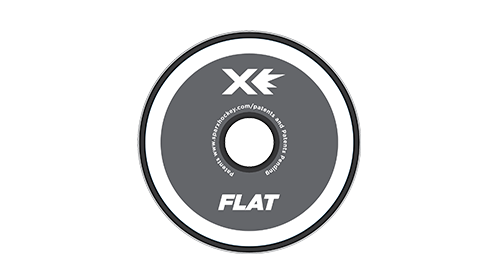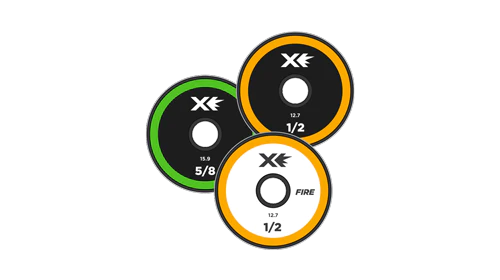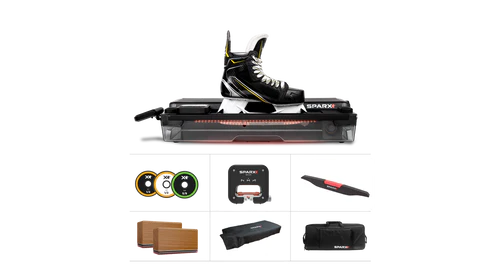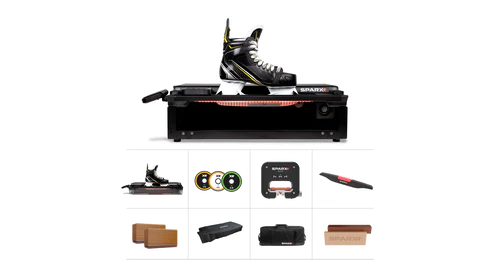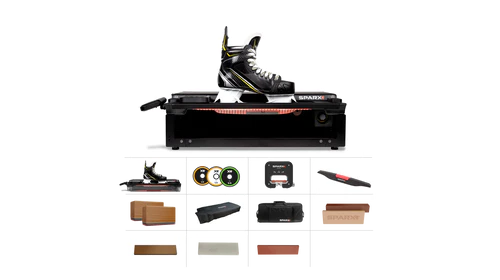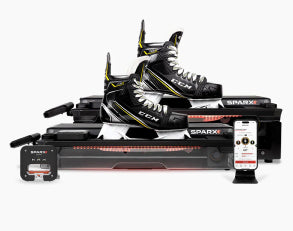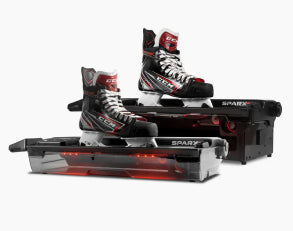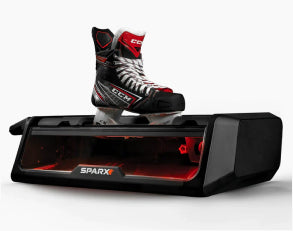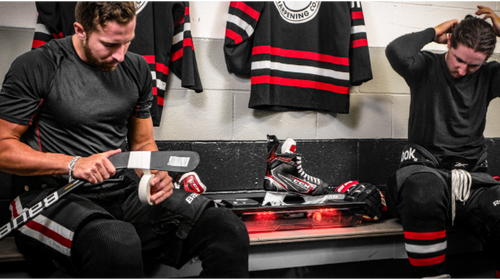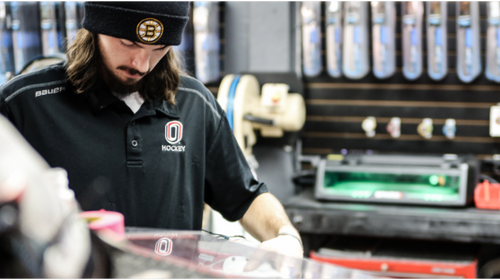Le cœur de l’ écosystème d’affûtage Sparx

LES BASES DE L'AFFÛTAGE DES PATINS
L'affûtage des patins peut facilement être défini comme le processus de façonnage de la lame d'un patin à glace avec une rectifieuse pour créer deux bords tranchants, lisses et nivelés. Lorsqu'un patin à glace est utilisé sur la glace, la lame peut s'émousser ou perdre son tranchant, ce qui peut affecter négativement les performances du patineur et augmenter le risque de blessure.

ÉGAL, AFFÛT, LISSE
Les éléments d’un bon affûtage peuvent être résumés par l’abréviation ESS. ESS signifie Uniforme, Sharp et Smooth. Un patin correctement affûté doit avoir des bords uniformes, des bords tranchants et une finition de surface lisse. Il est important de vérifier ces trois éléments à chaque fois que vos patins sont affûtés. Même si un seul de ces éléments est désactivé, vos performances pourraient en être affectées.

RAYON DE CREUX
L’un des aspects les plus déroutants de l’affûtage des patins pour la plupart des individus est le terme rayon de creux. Bien que quelques mathématiques de base soient impliquées, le concept de rayon de creux (ou creux ou RoH en abrégé) est assez simple. Un rayon est la distance entre le centre d'un cercle et son bord extérieur et un creux est une coupure ou une dépression dans quelque chose.

PROFIL DE LAME
Il existe souvent une confusion entre le rayon de creux d'une lame de patin et le profil (également connu sous le nom de « rocker » ou « contour »). Cette confusion est compréhensible car les deux termes utilisent le rayon d’un cercle comme mesure. Lorsqu’on se réfère au rayon de creux (la profondeur de la coupe dans la lame), la mesure est en pouces. Lorsqu'on se réfère au profil de la lame du patin, la mesure est en pieds.

ÉBAVURAGE
Après chaque affûtage de patins et avant de tester les carres, nous recommandons d'ébavurer les deux côtés de la lame avec une pierre à ébavurer, une pierre en caoutchouc ou une estrope en cuir. Dans tout affûtage (manuel ou automatisé), lorsque la pierre coupe l'acier, elle découpe le creux souhaité et souvent cette coupe laisse derrière elle de l'acier qui a « replié » les côtés de la lame.

TEST DES BORDS DE LAME
Une fois que vous avez affûté vos patins et terminé le processus d'ébavurage, c'est toujours une bonne idée de vérifier vos bords pour vous assurer qu'ils sont uniformes. Vous trouverez ci-dessous quelques façons différentes de mesurer vos bords.
